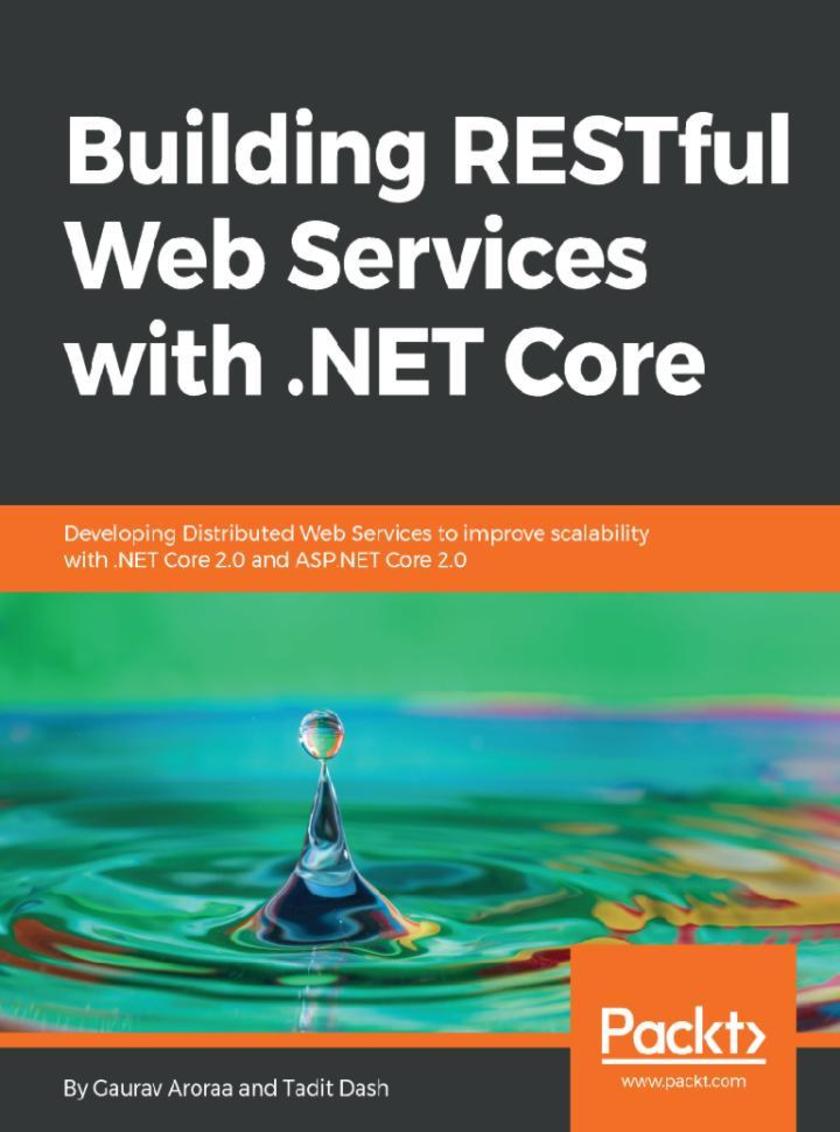
Building RESTful Web Services with .NET Core
¥73.02
Building Complete E-commerce/Shopping Cart Application About This Book ? Follow best practices and explore techniques such as clustering and caching to achieve a reactive, scalable web service ? Leverage the .NET Framework to quickly implement RESTful endpoints. ? Learn to implement a client library for a RESTful web service using ASP.NET Core. Who This Book Is For This book is intended for those who want to learn to build RESTful web services with the latest .NET Core Framework. To make best use of the code samples included in the book, you should have a basic knowledge of C# and .NET Core. What You Will Learn ? Add basic authentication to your RESTful API ? Create a Carts Controller and Orders Controller to manage and process Orders ? Intercept HTTP requests and responses by building your own middleware ? Test service calls using Postman and Advanced REST Client ? Secure your data/application using annotations In Detail REST is an architectural style that tackles the challenges of building scalable web services. In today's connected world, APIs have taken a central role on the web. APIs provide the fabric through which systems interact, and REST has become synonymous with APIs. The depth, breadth, and ease of use of ASP.NET Core makes it a breeze for developers to work with for building robust web APIs. This book takes you through the design of RESTful web services and leverages the ASP.NET Core framework to implement these services. This book begins by introducing you to the basics of the philosophy behind REST. You'll go through the steps of designing and implementing an enterprise-grade RESTful web service. This book takes a practical approach, that you can apply to your own circumstances. This book brings forth the power of the latest .NET Core release, working with MVC. Later, you will learn about the use of the framework to explore approaches to tackle resilience, security, and scalability concerns. You will explore the steps to improve the performance of your applications. You'll also learn techniques to deal with security in web APIs and discover how to implement unit and integration test strategies. By the end of the book, you will have a complete understanding of Building a client for RESTful web services, along with some scaling techniques. Style and approach This book is a step-by-step, hands-on guide to designing and building RESTful web services.
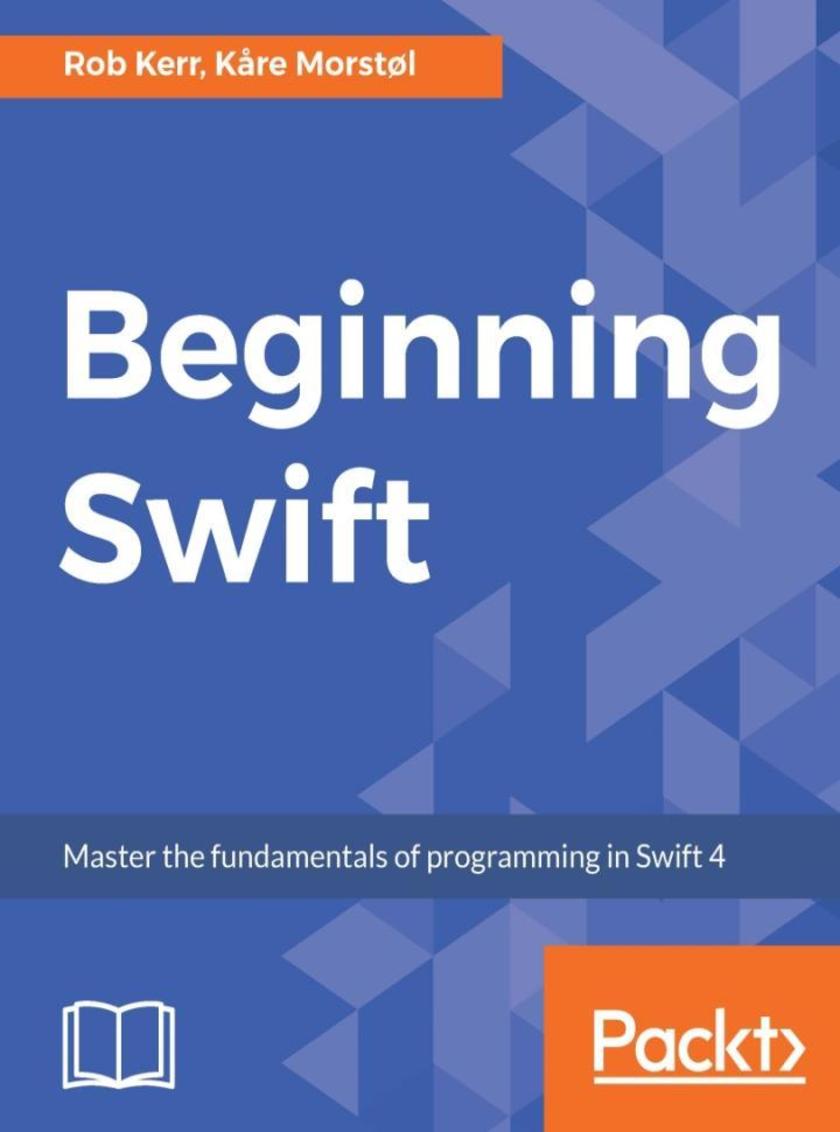
Beginning Swift
¥43.59
Master the fundamentals of programming in Swift 4 About This Book ? Covers theory and practice in equal parts ? Teaches you how to correctly structure and architect software using Swift ? Uses real-world examples to connect the theory to a professional setting ? Imparts expertise in the core Swift standard library Who This Book Is For If you are seeking fundamental Swift programming skills, in preparation for learning to develop native applications for iOS or macOS, this book is the best for you. You don’t need to have any prior Swift knowledge; however, object-oriented programming experience is desired. What You Will Learn ? Explore the fundamental Swift programming concepts, language structure, and the Swift programming syntax ? Learn how Swift compares to other computer languages and how to transform your thinking to leverage new concepts such as optionals and protocols ? Master how to use key language elements, such as strings and collections ? Grasp how Swift supports modern application development using advanced features, such as built-in Unicode support and higher-order functions. In Detail Take your first foray into programming for Apple devices with Swift. Swift is fundamentally different from Objective-C, as it is a protocol-oriented language. While you can still write normal object-oriented code in Swift, it requires a new way of thinking to take advantage of its powerful features and a solid understanding of the basics to become productive. This course helps you develop client-side and server-side applications, as well as web services using Swift. We'll begin with exploring the fundamental Swift programming concepts, language structure, and the Swift programming syntax. Then, we'll learn to create original custom operators with Swift operators, branching, and loops. Moving on, we'll learn how to run application codes and compile errors. Having made progress with it, we'll see how Swift compares to other computer languages and how to transform your thinking. Then, master the usage of key language elements, such as strings and collections. Finally, grasp how Swift supports modern application development using advanced features, such as built-in Unicode support and higher-order functions. This is an introductory course to the Swift programming language with Xcode.After completing this course, students will be well-prepared to begin developing native end-user applications for iOS or macOS, or to develop server-side (back-end) application and web services using Swift on Linux. Style and approach This is an introductory course to the Swift programming language with Xcode. The course does not expect you to have any previous Swift knowledge or experience. The course covers ample amount of exercises so that students learn the basics hands-on.

Natural Language Processing with TensorFlow
¥73.02
Write modern natural language processing applications using deep learning algorithms and TensorFlow About This Book ? Focuses on more efficient natural language processing using TensorFlow ? Covers NLP as a field in its own right to improve understanding for choosing TensorFlow tools and other deep learning approaches ? Provides choices for how to process and evaluate large unstructured text datasets ? Learn to apply the TensorFlow toolbox to specific tasks in the most interesting field in artificial intelligence Who This Book Is For This book is for Python developers with a strong interest in deep learning, who want to learn how to leverage TensorFlow to simplify NLP tasks. Fundamental Python skills are assumed, as well as some knowledge of machine learning and undergraduate-level calculus and linear algebra. No previous natural language processing experience required, although some background in NLP or computational linguistics will be helpful. What You Will Learn ? Core concepts of NLP and various approaches to natural language processing ? How to solve NLP tasks by applying TensorFlow functions to create neural networks ? Strategies to process large amounts of data into word representations that can be used by deep learning applications ? Techniques for performing sentence classification and language generation using CNNs and RNNs ? About employing state-of-the art advanced RNNs, like long short-term memory, to solve complex text generation tasks ? How to write automatic translation programs and implement an actual neural machine translator from scratch ? The trends and innovations that are paving the future in NLP In Detail Natural language processing (NLP) supplies the majority of data available to deep learning applications, while TensorFlow is the most important deep learning framework currently available. Natural Language Processing with TensorFlow brings TensorFlow and NLP together to give you invaluable tools to work with the immense volume of unstructured data in today’s data streams, and apply these tools to specific NLP tasks. Thushan Ganegedara starts by giving you a grounding in NLP and TensorFlow basics. You'll then learn how to use Word2vec, including advanced extensions, to create word embeddings that turn sequences of words into vectors accessible to deep learning algorithms. Chapters on classical deep learning algorithms, like convolutional neural networks (CNN) and recurrent neural networks (RNN), demonstrate important NLP tasks as sentence classification and language generation. You will learn how to apply high-performance RNN models, like long short-term memory (LSTM) cells, to NLP tasks. You will also explore neural machine translation and implement a neural machine translator. After reading this book, you will gain an understanding of NLP and you'll have the skills to apply TensorFlow in deep learning NLP applications, and how to perform specific NLP tasks. Style and approach The book provides an emphasis on both the theory and practice of natural language processing. It introduces the reader to existing TensorFlow functions and explains how to apply them while writing NLP algorithms. The popular Word2vec method is used to teach the essential process of learning word representations. The book focuses on how to apply classical deep learning to NLP, as well as exploring cutting edge and emerging approaches. Specific examples are used to make the concepts and techniques concrete.
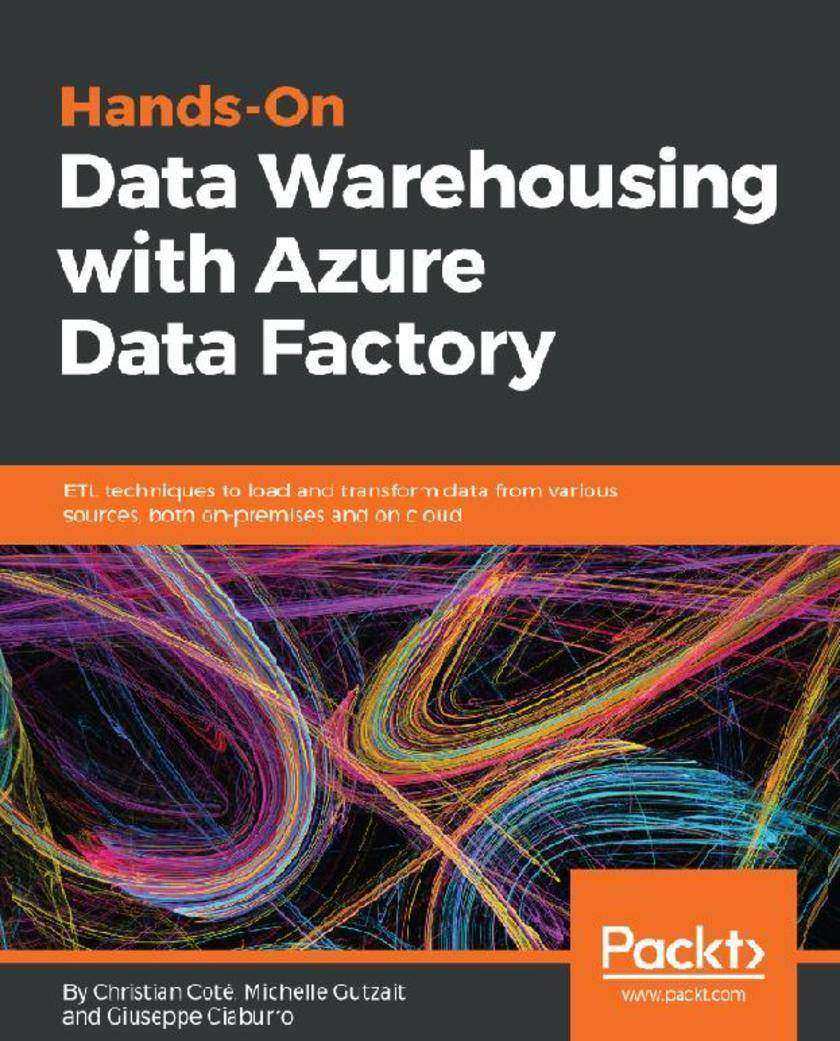
Hands-On Data Warehousing with Azure Data Factory
¥81.74
Leverage the power of Microsoft Azure Data Factory v2 to build hybrid data solutions About This Book ? Combine the power of Azure Data Factory v2 and SQL Server Integration Services ? Design and enhance performance and scalability of a modern ETL hybrid solution ? Interact with the loaded data in data warehouse and data lake using Power BI Who This Book Is For This book is for you if you are a software professional who develops and implements ETL solutions using Microsoft SQL Server or Azure cloud. It will be an added advantage if you are a software engineer, DW/ETL architect, or ETL developer, and know how to create a new ETL implementation or enhance an existing one with ADF or SSIS. What You Will Learn ? Understand the key components of an ETL solution using Azure Data Factory and Integration Services ? Design the architecture of a modern ETL hybrid solution ? Implement ETL solutions for both on-premises and Azure data ? Improve the performance and scalability of your ETL solution ? Gain thorough knowledge of new capabilities and features added to Azure Data Factory and Integration Services In Detail ETL is one of the essential techniques in data processing. Given data is everywhere, ETL will always be the vital process to handle data from different sources. Hands-On Data Warehousing with Azure Data Factory starts with the basic concepts of data warehousing and ETL process. You will learn how Azure Data Factory and SSIS can be used to understand the key components of an ETL solution. You will go through different services offered by Azure that can be used by ADF and SSIS, such as Azure Data Lake Analytics, Machine Learning and Databrick’s Spark with the help of practical examples. You will explore how to design and implement ETL hybrid solutions using different integration services with a step-by-step approach. Once you get to grips with all this, you will use Power BI to interact with data coming from different sources in order to reveal valuable insights. By the end of this book, you will not only learn how to build your own ETL solutions but also address the key challenges that are faced while building them. Style and approach A step-by-step guide to develop data movement code using SSIS, Azure Data Factory, and database stored procedures for implementing intelligent BI solutions.

Implementing Oracle API Platform Cloud Service
¥90.46
Work with the newest Oracle API Platform Cloud Service to interface with the increasingly complex array of services your clients want. About This Book ? Understand the architecture and functionality of the new Oracle API Cloud Service Platform ? Understand typical use cases for the new platform and how it can work for you ? Design your own APIs, then deploy and customize your APIs ? Implement Oauth 2.0 policy and custom policies ? Migrate from Oracle 12c solutions to the new Oracle API platform Who This Book Is For This book is for all Oracle developers who are working or plan to work with the Oracle API Platform Cloud Service. What You Will Learn ? Get an overview of the Oracle API Cloud Service Platform ? See typical use cases of the Oracle API Cloud Service Platform ? Design your own APIs using Apiary ? Build and run microservices ? Set up API gateways with the new API platform from Oracle ? Customize developer portals ? Configuration management ? Implement Oauth 2.0 policies ? Implement custom policies ? Get a policy SDK overview ? Transition from Oracle API Management 12c to the new Oracle API platform In Detail Implementing Oracle API Platform Cloud Service moves from theory to practice using the newest Oracle API management platform. This critical new platform for Oracle developers allows you to interface the complex array of services your clients expect in the modern world. First, you'll learn about Oracle’s new platform and get an overview of it, then you'll see a use case showing the functionality and use of this new platform for Oracle customers. Next, you’ll see the power of Apiary and begin designing your own APIs. From there, you’ll build and run microservices and set up the Oracle API gateways. Moving on, you’ll discover how to customize the developer portal and publish your own APIs. You’ll spend time looking at configuration management on the new platform, and implementing the Oauth 2.0 policy, as well as custom policies. The latest finance modules from Oracle will be examined, with some of the third party alternatives in sight as well. This broad-scoped book completes your journey with a clear examination of how to transition APIs from Oracle API Management 12c to the new Oracle API Platform, so that you can step into the future confidently. Style and approach This book provides comprehensive coverage of all aspects of Oracle API development using the new Oracle API Platform Cloud Service. All aspects of the new Oracle API Platform Cloud Service are considered and your practical, working Oracle situations are examined to give you have hands-on experience using the new API platform from Oracle.
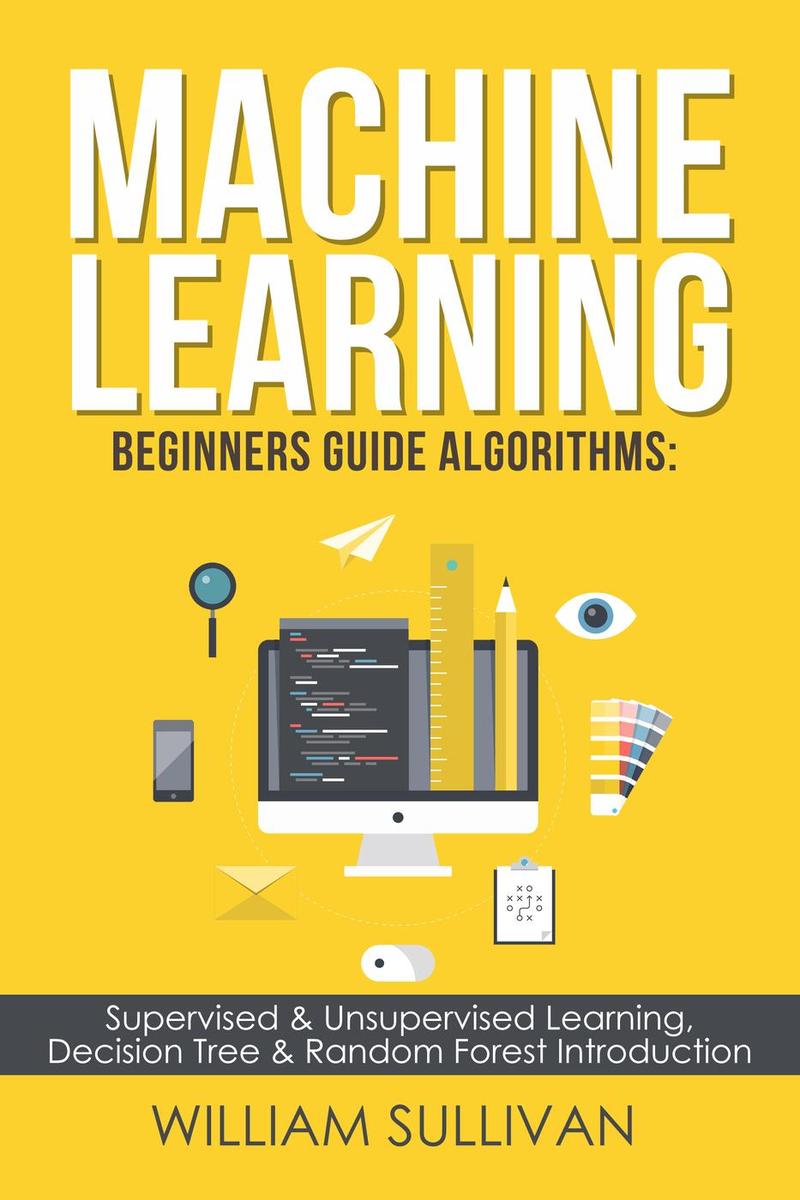
Machine Learning For Beginners Guide Algorithms
¥32.62
Machines can LEARN ?!?! Machine learning occurs primarily through the use of " algorithms" and other elaborate procedures Whether you're a novice, intermediate or expert this book will teach you all the ins, outs and everything you need to know about machine learning Note: Bonus chapters included inside! Instead of spending hundreds or even thousands of dollars on courses/materials why not read this book instead? Its a worthwhile read and the most valuable investment you can make for yourself Other books easily retail for $50-$100+ and have far less quality content. This book is by far superior and exceeds any other book available for beginners. What You'll Learn Supervised Learning Unsupervised Learning Reinforced Learning Algorithms Decision Tree Random Forest Neural Networks Python Deep Learning And much, much more! This is the most comprehensive and easy to read step by step guide in machine learning that exists. Learn from one of the most reliable programmers alive and expert in the field You do not want to miss out on this incredible offer!
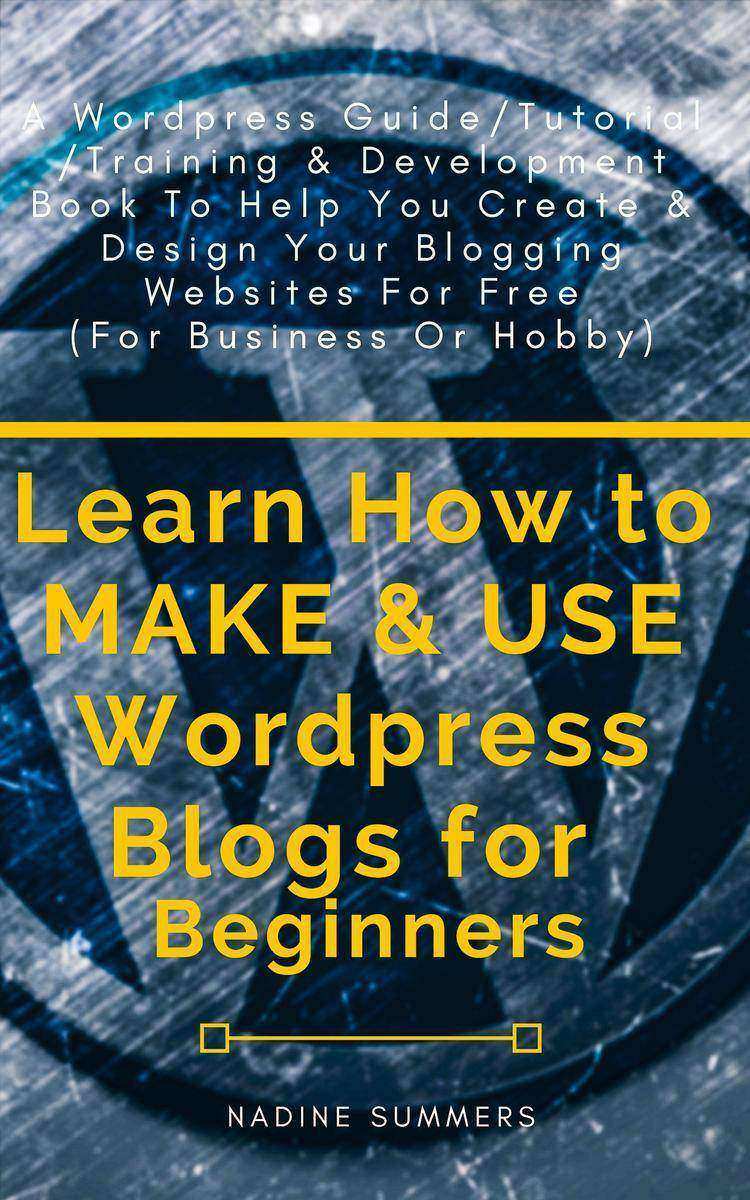
Learn How to MAKE & USE Wordpress Blogs for Beginners
¥24.44
Learn How to MAKE & USE Wordpress Blogs for Beginners

The Singularity is Coming
¥26.73
The Singularity is Coming
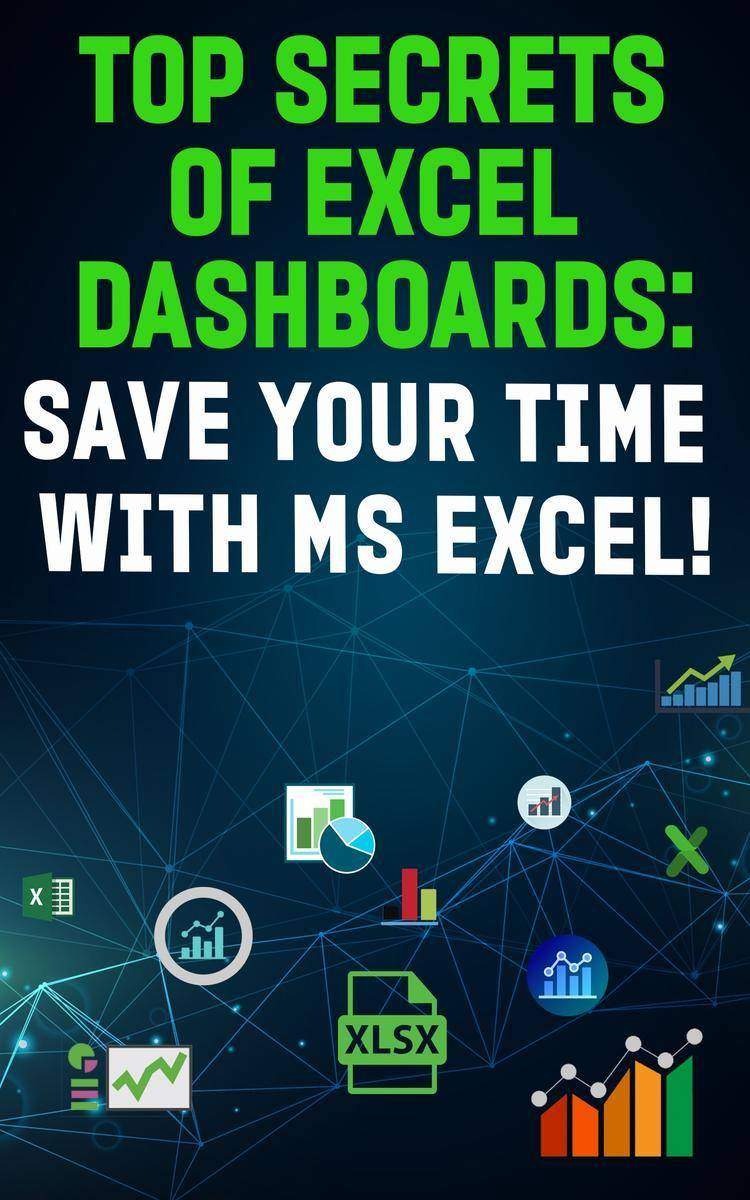
Top Secrets Of Excel Dashboards: Save Your Time With MS Excel
¥24.44
Top Secrets Of Excel Dashboards: Save Your Time With MS Excel

How to Learn Microsoft Office Powerpoint Quickly!
¥24.44
How to Learn Microsoft Office Powerpoint Quickly!

Applications to Support Normal and Critical Operations in a Tactical MLS System:
¥5.97
Applications to Support Normal and Critical Operations in a Tactical MLS System: Cybersecurity
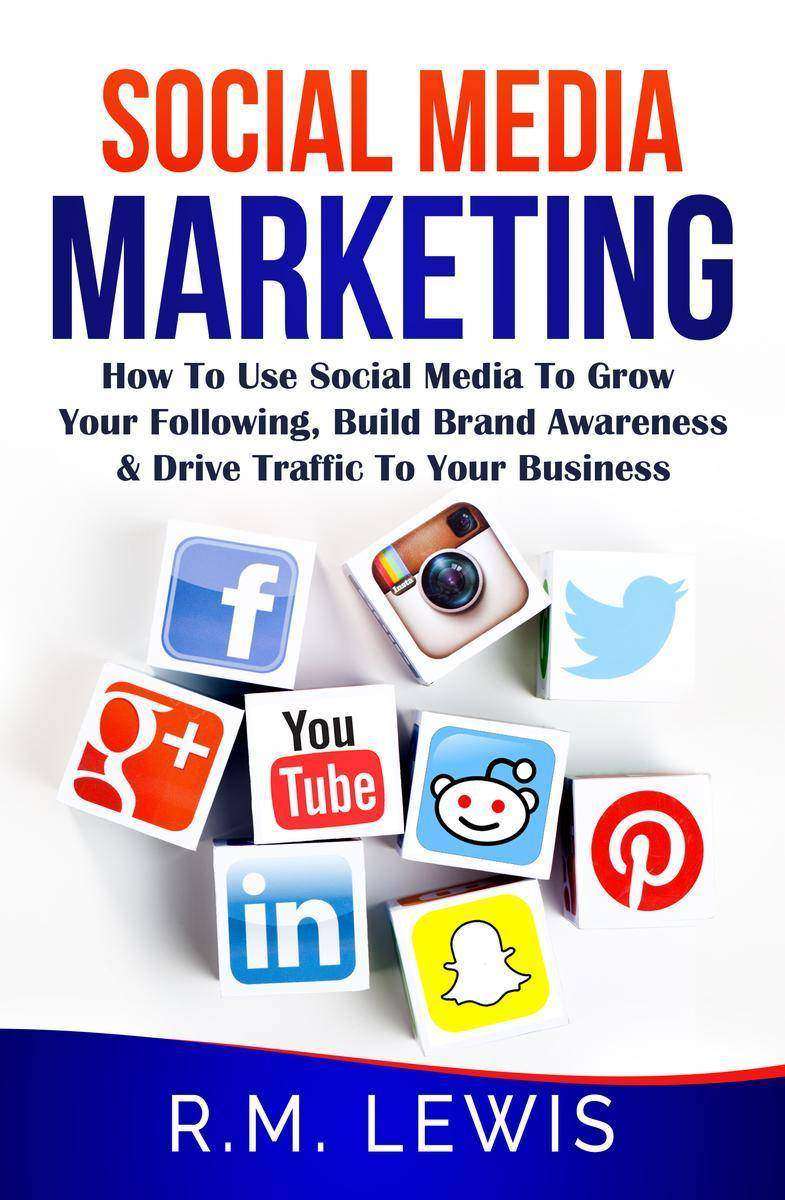
Social Media Marketing in 2018
¥24.44
Social Media Marketing in 2018

20 Most Powerful Conditional Formatting Techniques
¥24.44
20 Most Powerful Conditional Formatting Techniques
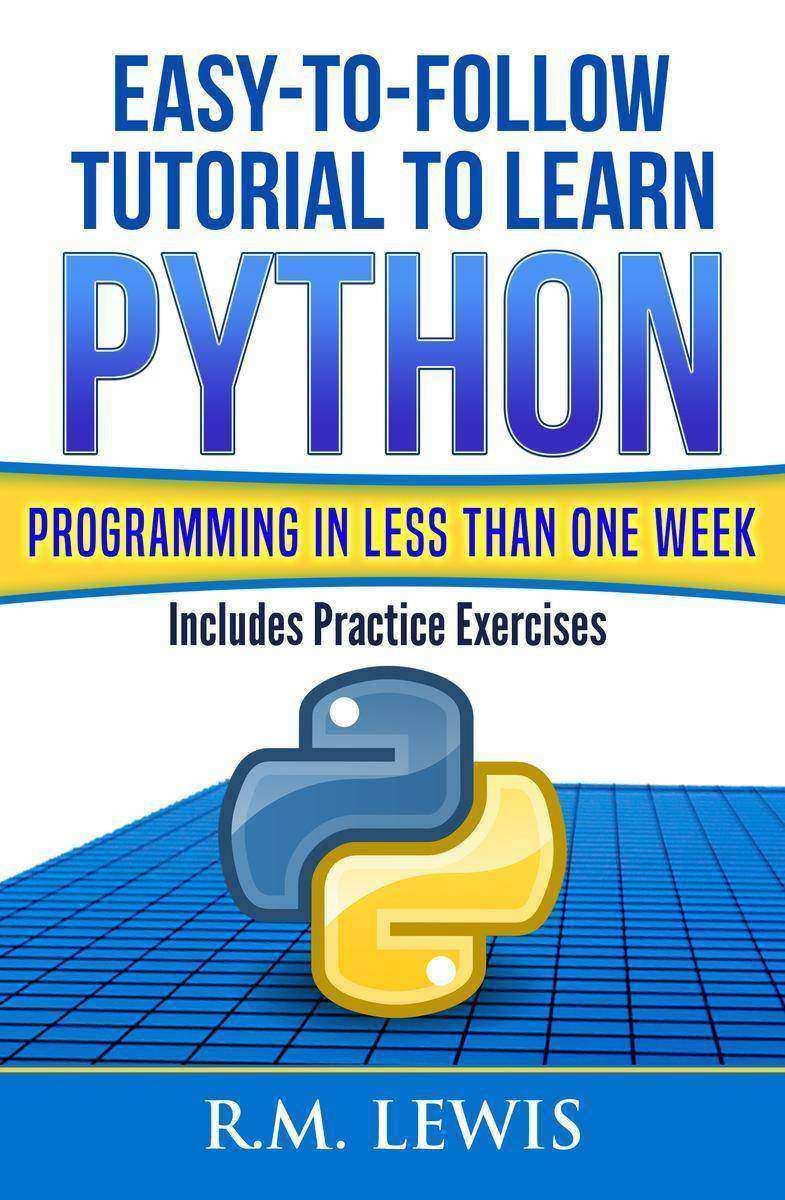
Easy-To-Follow Tutorial To Learn Python Programming In Less Than One Week
¥24.44
Easy-To-Follow Tutorial To Learn Python Programming In Less Than One Week
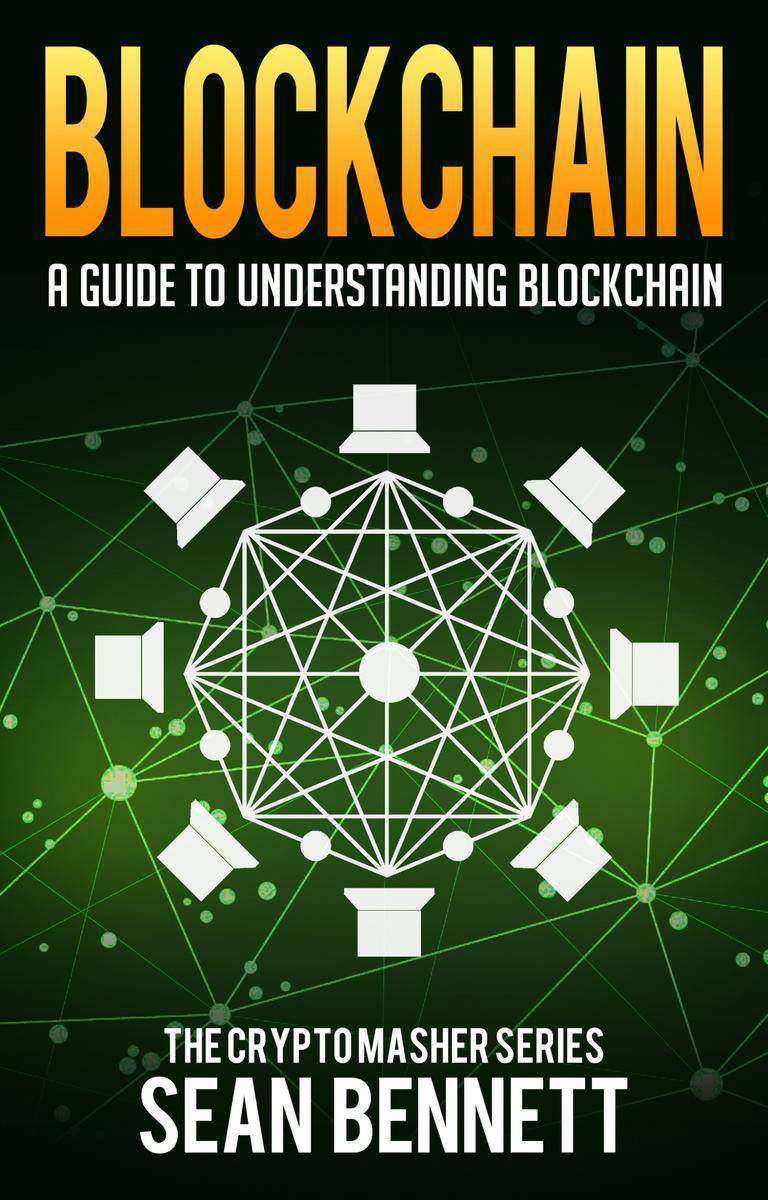
Blockchain: A Guide to Understanding Blockchain
¥32.62
Blockchain: A Guide to Understanding Blockchain
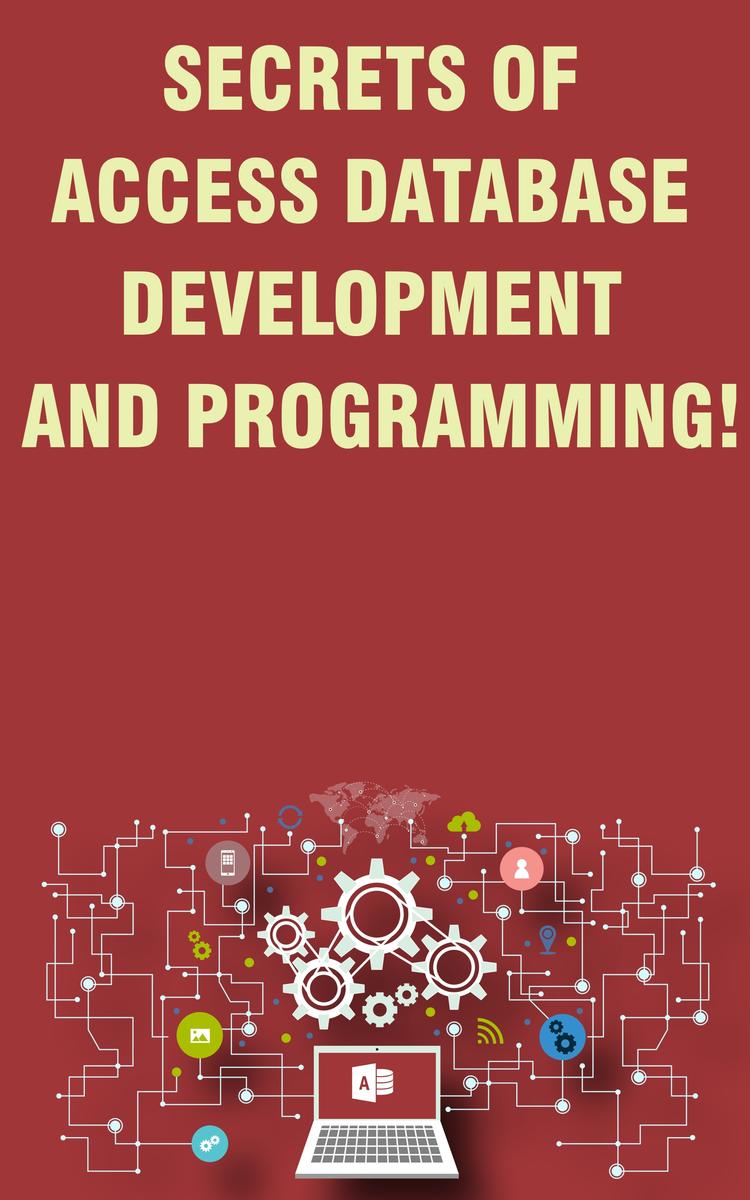
Secrets of Access Database Development and Programming
¥24.44
Secrets of Access Database Development and Programming
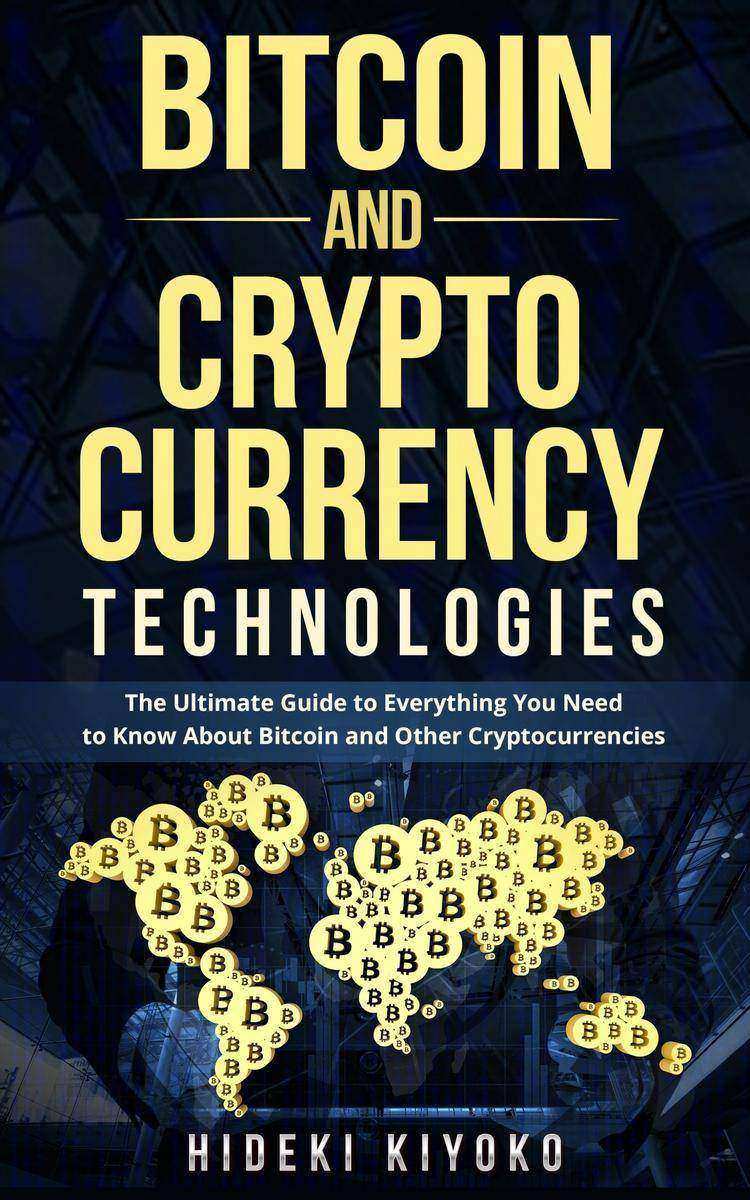
Bitcoin and Cryptocurrency Technologies
¥24.44
Bitcoin and Cryptocurrency Technologies

Neural Networks: Neural Networks Tools and Techniques for Beginners
¥40.79
Neural Networks: Neural Networks Tools and Techniques for Beginners
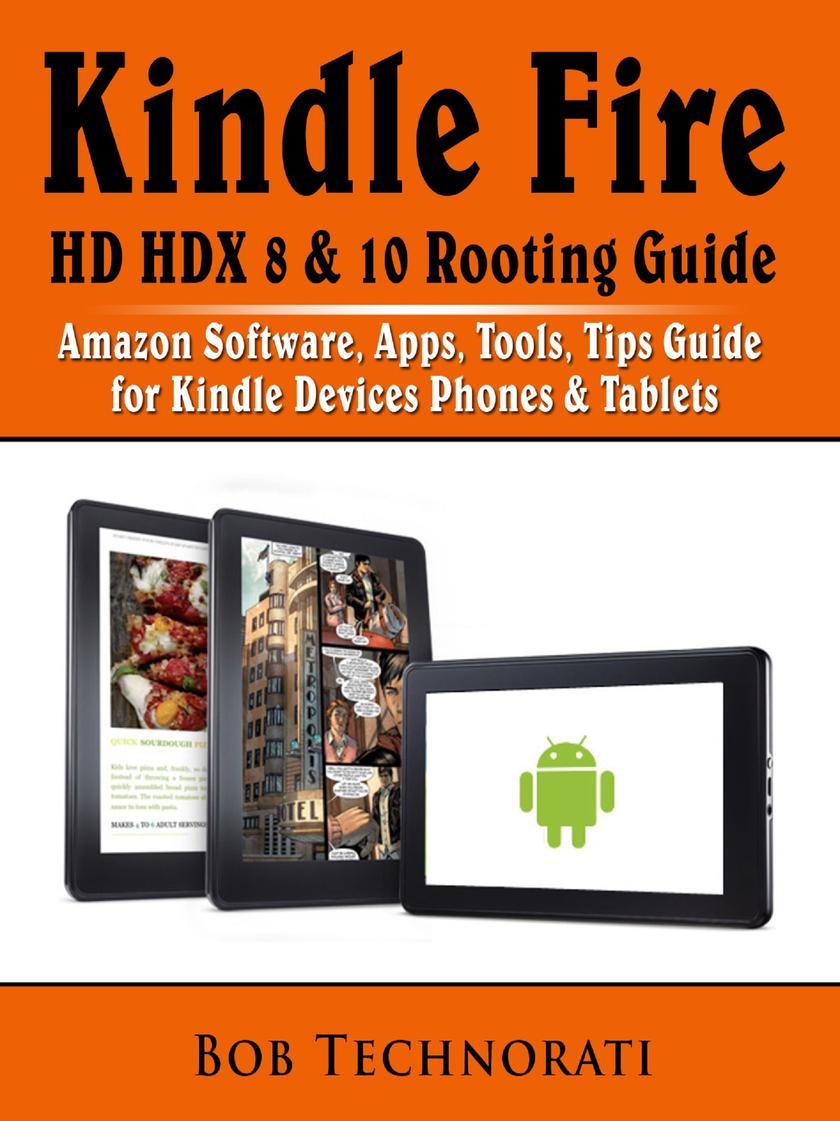
Kindle Fire HD HDX 8 & 10 Rooting Guide
¥40.79
Kindle Fire HD HDX 8 & 10 Rooting Guide

Kindle Fire HD HDX 8 & 10 Tablet Complete Manual User Guide
¥40.79
Kindle Fire HD HDX 8 & 10 Tablet Complete Manual User Guide

Microsoft PowerPoint
¥20.44
Microsoft PowerPoint




 购物车
购物车 个人中心
个人中心



